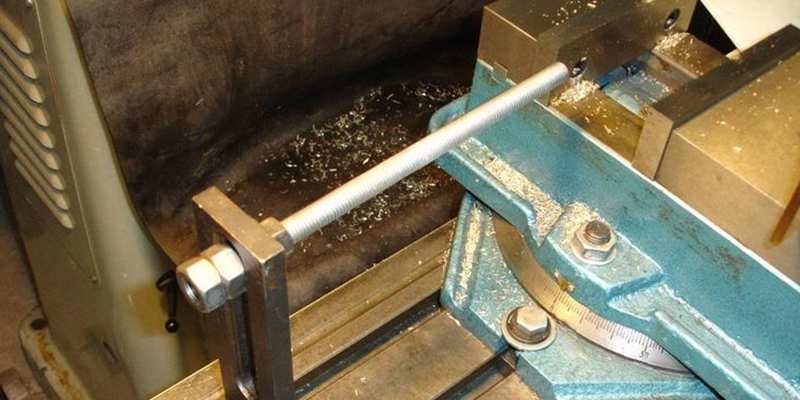
One of the most commonly used clamping tools to hold the part in place is the machine vise. However, you may not know it by the name machine lathe as it also has other names such as engineering lathe, locksmith lathe, and metalworking lathe. This tool is essential in most woodworking and metalworking processes. Although there are other milling vises, the machine vise stands out because it works efficiently with a wedge operation.
So what is a machine lathe? What parts does this retention device consist of and what functions does it have? How can I improve the clamping of the part using the vise? Read on as we answer these questions and provide more interesting information about this parts holding device.
What is a machine lathe?
It is also known as a mechanic's lathe. A machine vise is a workpiece holder with a metal body that is attached to the top of a workbench for various purposes. It is a resistant vise that guarantees better precision and quality of work, as it allows the craftsman to hold an object firmly. It can be fixed to the side of the workbench to provide better support for all types of work tools.
Typically, a machine vise has a movable jaw 7 to 20 cm wide, slightly smaller than a carpenter's vise (17 to 25 cm). These jaws help hold an object in place and may have wooden or plastic lines around the edges to prevent damage to the object.
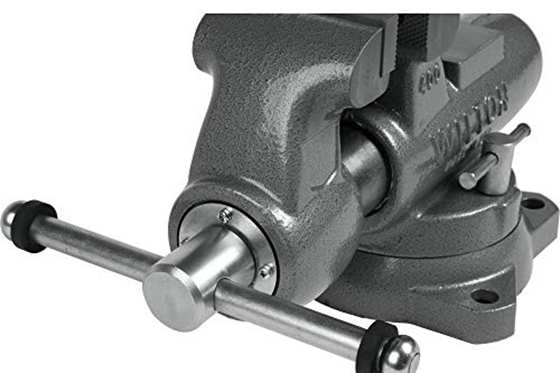
Machine lathes differ from other types in two ways: the bracket and the heavy metal construction. They are made of heavy metal, which allows them to withstand multiple loads and be used in a variety of ways. Secondly, unlike other vises, they are attached to the work table with screws.
If a machine vise also has a solid base, this contributes to stability during work. However, a dynamic basis serves different purposes and may limit accuracy in some projects. The swivel base rotates in a circular fashion, holding the object diagonally, not vertically.
Why is a machine lathe used?
What a machinist does is hold the workpieces securely between his jaws for milling so that they remain still while the cutter rotates through them. This is completely different from jigs and fixtures.
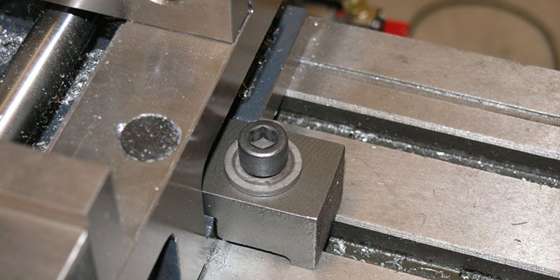
Engineers and craftsmen often use this milling vise for milling and other work because the milling cutter exerts external pressure when rotating. To explain further: During this type of work, if the lathe does not hold the part firmly in place, the pressure from the cutter will deflect it. This therefore puts user safety at risk. For this reason, using a milling vise for your drill press is beneficial as it allows for hands-free milling.
Steel, wood, aluminum and plastic are some materials that a machine vise can clamp. The machine lathe is often used by engineers to create dovetail joints on a milling machine and can perform milling tasks such as profiling and plunging. Furthermore, this parts holder is easy to use as it does not require much skill and experience to carry out operations.
What makes a good machine lathe?
Most machine lathes have an iron body and surface, which makes them strong and helps them withstand forces. Furthermore, they have a wedge process that perfectly pulls the flexible jaws into the bed. This means that objects stay in place and do not wobble or deform due to the narrow jaws.
These tools come in different sizes depending on the width of the jaws. The least wide ones can be at least 10 centimeters wide and up to 25 centimeters wide. However, lathes with a width of 6 inches are more commonly used in industry, but larger CNC lathes can reach 12 inches.
Are rotating bases the best solution? Swivel bases make it easy to adjust the jaws to the perfect angle, but most crafters opt for the fixed base.
Steps for Using a Machine Lathe
Here are the basic steps to help you set up the lathe perfectly.
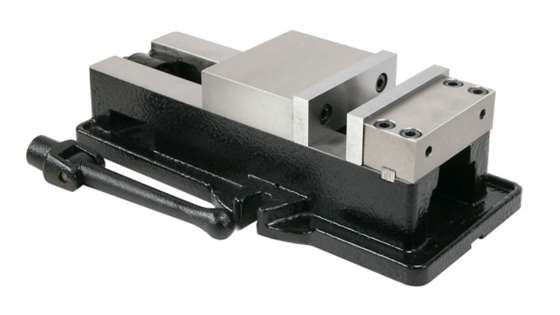
1. Make sure the table is clean
Always make sure your table is clean and free of wood chips or other shavings before assembling it. It is not advisable to mount the vise on a chip as this may affect the balance. Also, do not try to shorten the table's T-slot, if there is one. To shorten, you must rotate the fixed jaw with a pointer to create a parallel arrangement between the vise and the shaft.
2. Cut the machine lathe to size
As explained earlier, cutting is one of the basic skills required to operate the milling vise efficiently. Below are some quick methods for trimming a machine lathe.
Device board method
You can mount your vise to a machine plate with three dowel pins, holding it and clamping it onto the pins.
Quick method
First install a pair of soft aluminum jaws, then insert a good end mill into the spindle before milling a step into the jaws. Insert with an object held in the vise under the step and cut now that the step is perfectly seated in the rail. Attach the step in pieces and it is ready to go.
Edge method
Clamp a yard or meter length of straight edge into the vise with the right edge facing up. Then position the edge of a T-slot machine table against a straight object or the edge of the table.
Orient your head so the ruler is aligned so you can see both ends without having to tilt your head. Orient it so that only your eyes move, then adjust the vise so it aligns with the table's function.
Factors for Choosing the Right Machine Lathe
These vises have different sized jaws and can range from heavy to light vises. So how do you know which lathe to choose for CNC machining or other operations? Read on as we provide factors to consider so you can make the right choice.
Size
You must know the size of the material to be clamped before deciding the size of the machine vise. This way you ensure that the width of the jaws corresponds to the width of the workpiece. The reason for this is that a smaller jaw is easier to adjust, but restricts the use of larger materials or objects more.
Weight
You should also consider the weight of the lathe machine before choosing one. Although weight is not a big issue since most milling machines have a table that can support any lathe weight, you should try it out and be sure. Therefore, be sure to check the product specifications to find out the weight of each device.
How can the part clamping solution be improved using a machine lathe?
There is a lot to do when it comes to attaching parts. But how can you improve part clamping using a machine vise? Here are some ways to do this successfully.
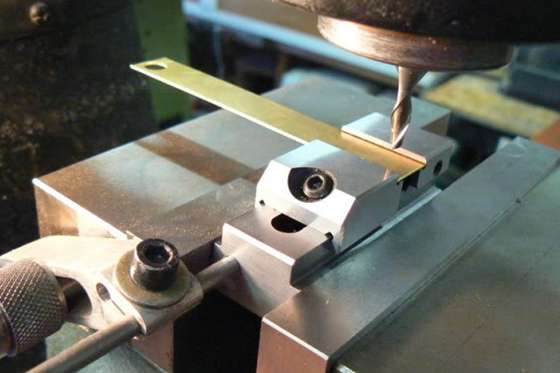
Use of various vises and jaws
Using multiple vises is one way to improve the part clamping solution. Furthermore, this shouldn't be a problem since most machine tables are large enough to install multiple lathes.
Multiple vises on one table increase ease of use. This is especially true when the vises have important dimensions and are within an acceptable tolerance. This also means that even if you duplicate an arrangement and place the lathes in a different order, you won't have any problems.
Plus, pairing machine lathes is easy as all you have to do is use a surface grinder. However, this is rarely necessary as most manufacturers do not pair machine lathes for you.
Dual Station Machine Lathe
Once you make the most of it So how do you do it?
A double lathe often looks like two lathes in one. This means you can place two workpieces in the machine's vise instead of just one. This significantly increases the number of parts you can work on at the same time on your milling table.
Using vises to clamp other part clamping solutions
The machine lathe and all its possible configurations, from multiple lathes to double-station lathes, make many jobs easier. Another way to improve clamping solutions is to use the vise to clamp other clamping devices. One way to achieve this is to insert grinding lathes or toolmaker vises into a machine lathe. The goal is to make the machine's vise jaws work in a different direction.
Additionally, using lathe pallets allows engineers to leave the lathe on the machine when working conditions are ideal for their work. Lathe pallets are miniature plate devices that sit in the jaws of a milling lathe.
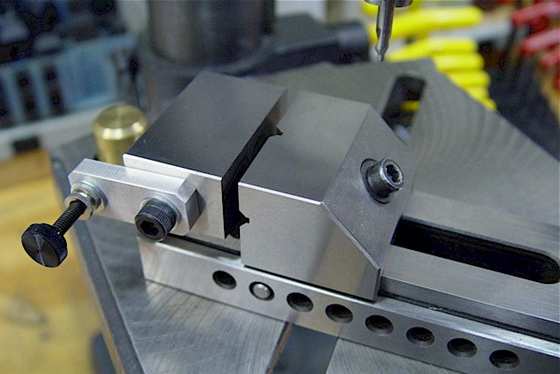
Custom soft jaws and hard jaws
Soft jaws are one of the most popular forms of clamping solutions for machine lathes. In this scenario, engineers create custom aluminum lathe jaws. The term “soft jaws” comes from the fact that aluminum is soft compared to other metals. On the other hand, hard jaws made from a more durable material are ideal if the craftsman values the long-term durability of the jaws.
Use of quick-change jaws
In fact, custom jaws combined with machine vises provide excellent part clamping solutions. However, changing lathe jaws takes time, which is why engineers and craftsmen are developing quick-change jaws.
Most shops spend a lot of time making custom jaws. However, these jaws are often packaged and stored in case a new or old customer places an order or a need for a jaw arises. When changing jaws to quick-change jaws, using Allen screws and a pneumatic ratchet can significantly speed up the process.
Machine Vs. Lathe CNC lathe: are they the same?
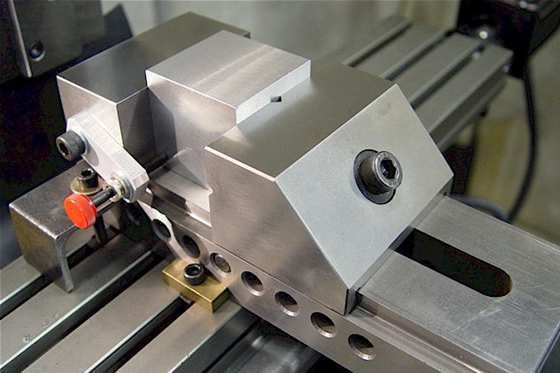
Compared to CNC vise jaws, machine vises have robust jaws that are designed to hold a very large workpiece, just like a drill press vise. The jaws have protective pads that protect softer materials and workpieces such as plastic and wood from damage during milling work. Most milling lathe models have an articulated base that allows circular movements.
CNC vise is not the same as machine vise. However, it offers a similar function to that of a lathe. The CNC vise has a more portable design, making it easier to use multiple vises on a router table. Furthermore, lateral and horizontal clamping is easier due to its multifaceted precision grinding.
The only challenge with CNC vises is the lack of a flange, which makes it a little difficult to attach them to the milling machine table. However, with special table clamps this challenge becomes trivial. Would you like to learn more about CNC machining? Luckily, we have a detailed post on the basics of CNC machining.
Maintenance and care of machine lathes
Maintenance is essential if you want your vise to continue functioning optimally. To ensure efficient performance, it is necessary to carry out some maintenance tasks regularly. One way to ensure optimal operation is to wipe moving parts with a clean cloth after each use. You also need to remove dirt, debris and grinding dust from the threads that can affect the grip.
Whether you are using a mechanical vise, a CNC vise, or another type of vise, be sure to lubricate the vise's joints, moving parts, and threads. This facilitates the smooth movement of the jaws of the CNC machine or lathe.
Other maintenance options include removing rust and occasionally repainting with a coating or applying rust-resistant paint. If there are also worn parts, you will need to replace them. Also, place the handle upright and bring the jaws together when not in use. If you work outdoors, you should also cover the work rack with a cloth to protect it from elements that can cause rust.
WayKen offers lathe clamping solutions for your machined parts
Concluding
Although other milling vises also work, the machine vise is unique because it uses a wedge motion to work effectively. Although it grips firmly, it does not damage the object thanks to the protective lines on the jaws. This device is useful in various manufacturing processes to hold objects in place.
Common questions
What is the difference between a lathe and a lathe?
There are differences between them. A mechanical vise is manually operated, while a mechanical vise is more automated because it is mounted on a machine. Additionally, a milling machine vise is better suited for use in an industrial setting, while a machine vise is perfect for use in a home workshop.
How do I find out the size of my lathe?
The length of the screw holding the jaws together determines the size of the vise. The shorter the screw, the shorter the opening distance between the fixed and sliding jaws. It is always important to remember that this parts holder would not efficiently hold objects wider than its maximum opening capacity.
Do I need a turntable for a machine lathe?
If you frequently make angled cuts, a rotating base may come in handy. However, with a swivel base, you must ensure that the vise is perpendicular to the bench.

























































